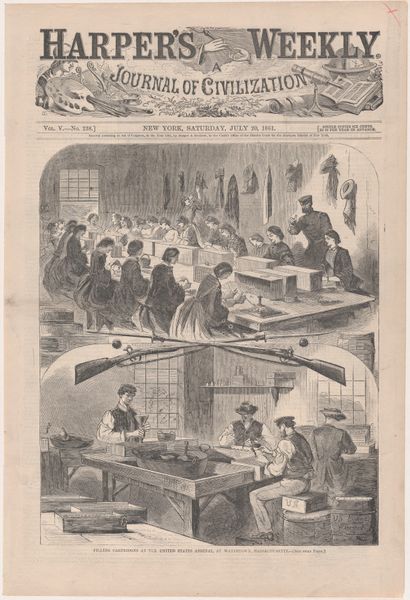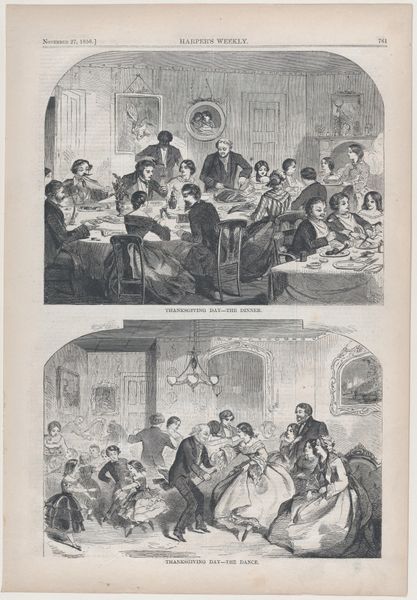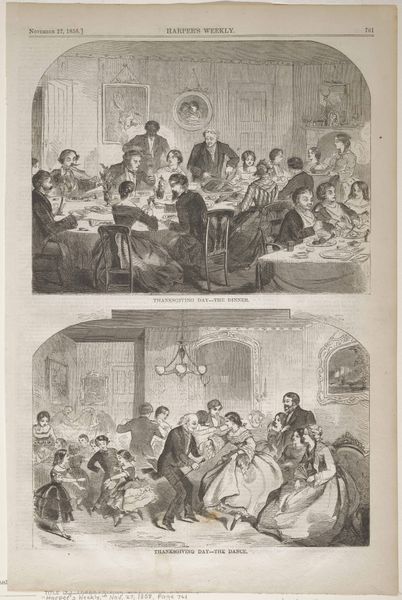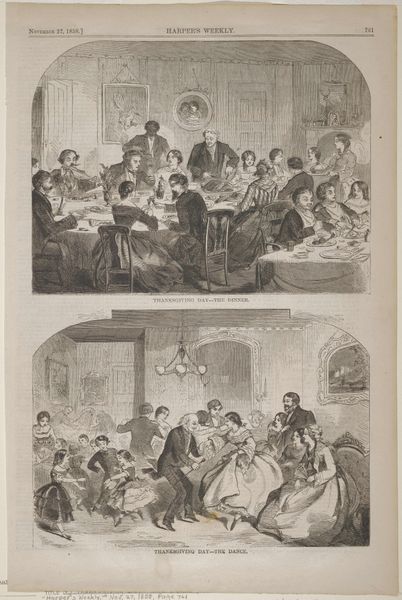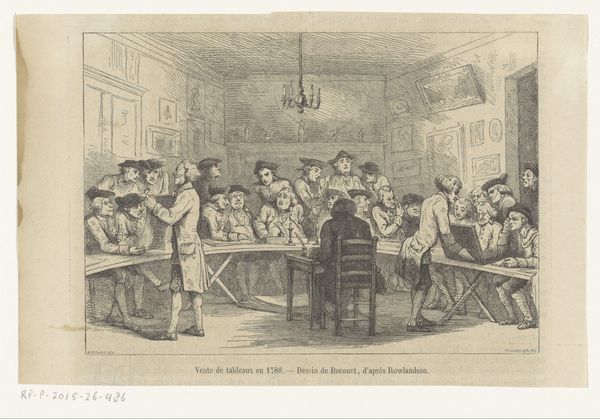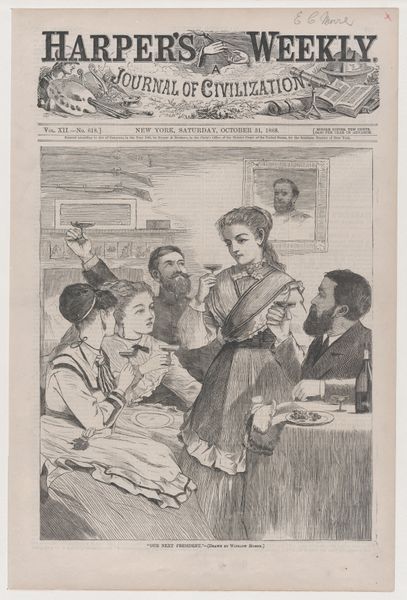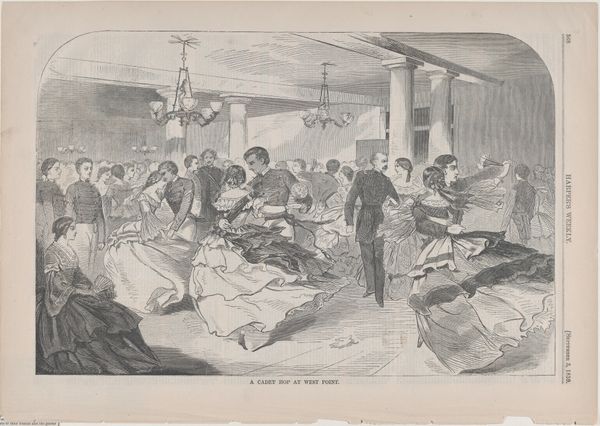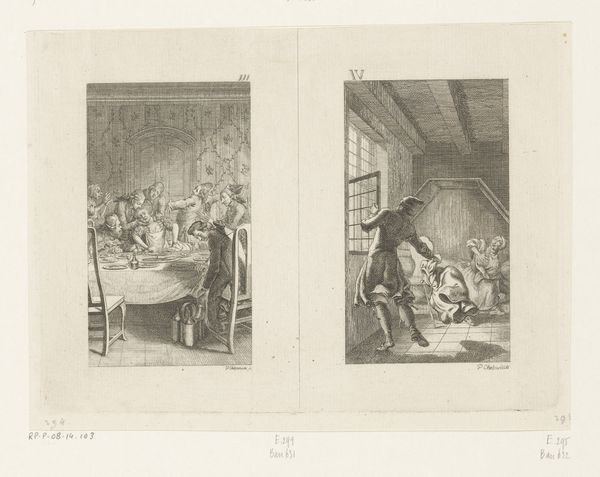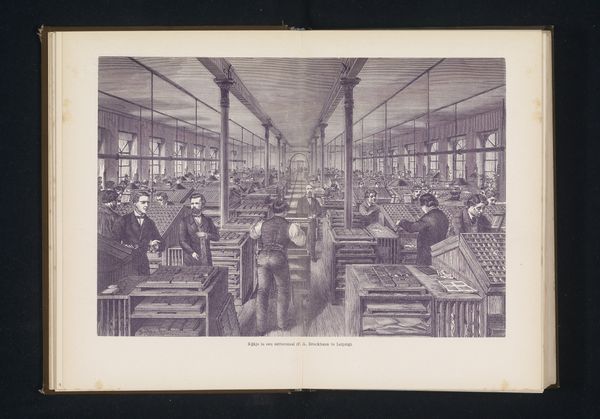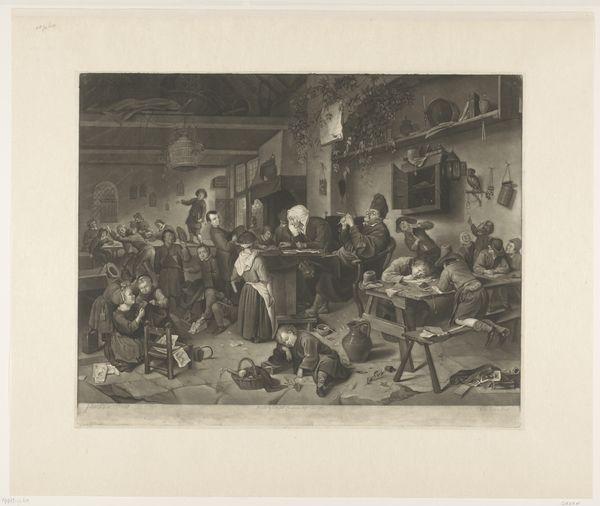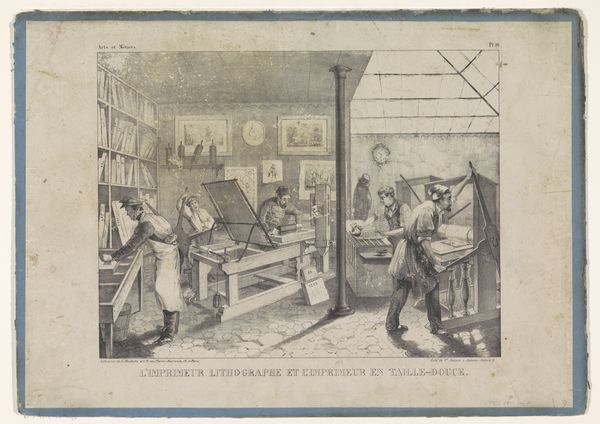
graphic-art, print, woodblock-print, woodcut, wood-engraving
#
graphic-art
#
narrative-art
# print
#
woodblock-print
#
woodcut
#
united-states
#
history-painting
#
wood-engraving
Dimensions: 10 15/16 x 9 3/16 in. (27.8 x 23.3 cm)
Copyright: Public Domain
Editor: Here we have "Filling Cartridges at the United States Arsenal" by Winslow Homer, published in 1861. It's a wood engraving showing two different workshops. The image feels very regimented and industrious, with people busy at repetitive tasks. What do you see in this piece, looking at it from your perspective? Curator: It’s interesting how Homer situates this very industrial scene within a popular illustrated news publication. Harper's Weekly aimed to shape public opinion during a deeply fractured time. This image, depicting both men and women engaged in wartime production, speaks to the widespread mobilization, blurring traditional gender roles in service of the Union cause. How does the visual layout influence your understanding? Editor: I noticed how distinct the two scenes are. There's a large group of women in the top half, and a smaller group of men in the bottom. Almost like they are disconnected factories. Curator: Precisely! Homer uses this spatial separation to highlight the division of labor, subtly emphasizing how different social groups contributed to the war effort, each within their own sphere of activity and visibility. Were it not for newspapers like Harper’s Weekly, such work, especially when done by women, may go unnoticed or unacknowledged. How do you read the inclusion of hanging clothes and military regalia? Editor: The clothing and hats certainly personalize the spaces; remind us that these aren't just machines working, but people. Curator: Exactly. These touches bridge the gap between the domestic and the military, a theme crucial to understanding the Civil War’s impact on American society. Consider also the journal's title: A Journal of Civilization. Are we supposed to understand civilization here in opposition to barbarity? Are the bullets a means of achieving a civilized society? Editor: I hadn't considered that stark contrast. It makes you think about the narratives being built at the time, doesn’t it? Curator: Yes, images like these played a crucial role in shaping public sentiment. Examining them gives us insights into the complex ways art was used to negotiate social and political tensions. Editor: That makes me see it in a completely different light now, understanding the narrative and its construction during such a crucial historical moment.
Comments
No comments
Be the first to comment and join the conversation on the ultimate creative platform.
